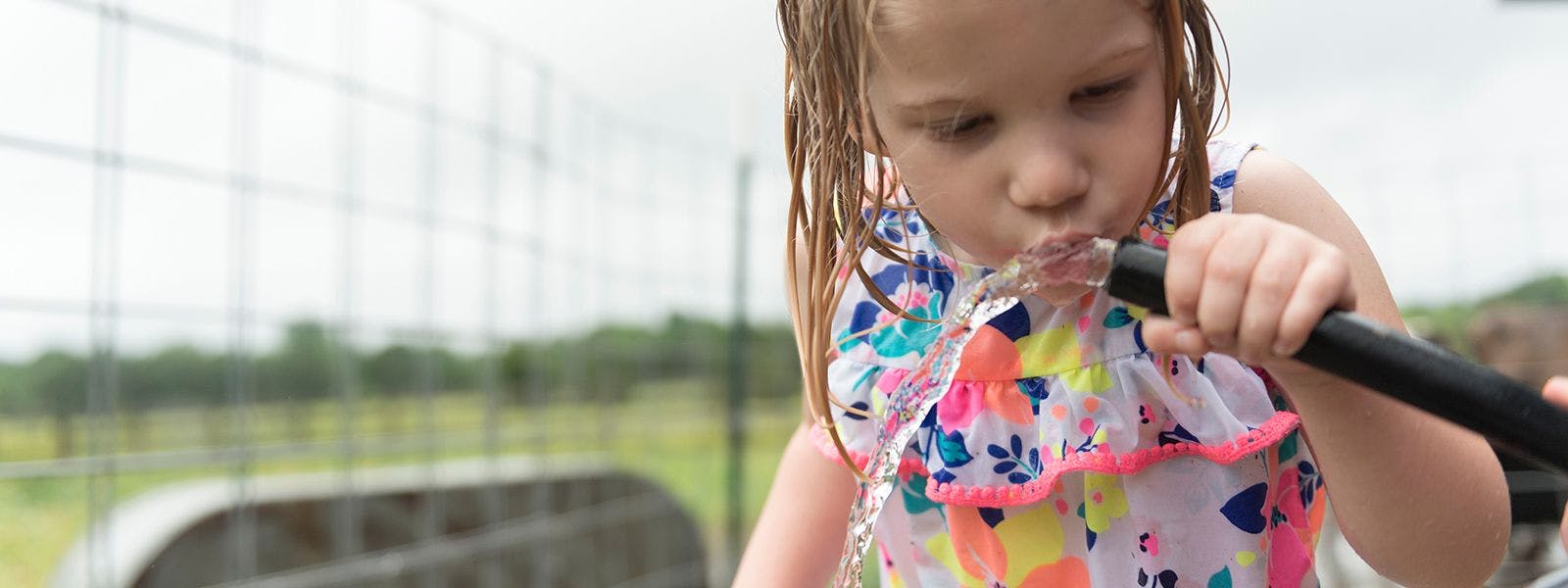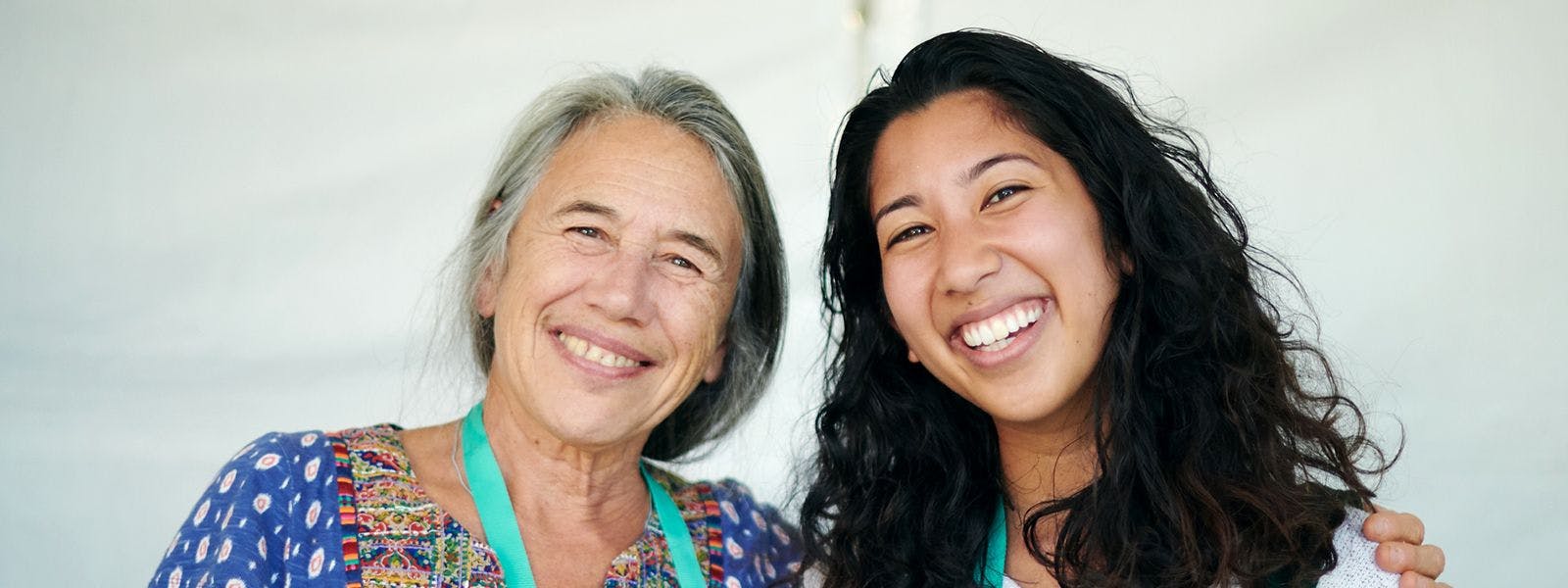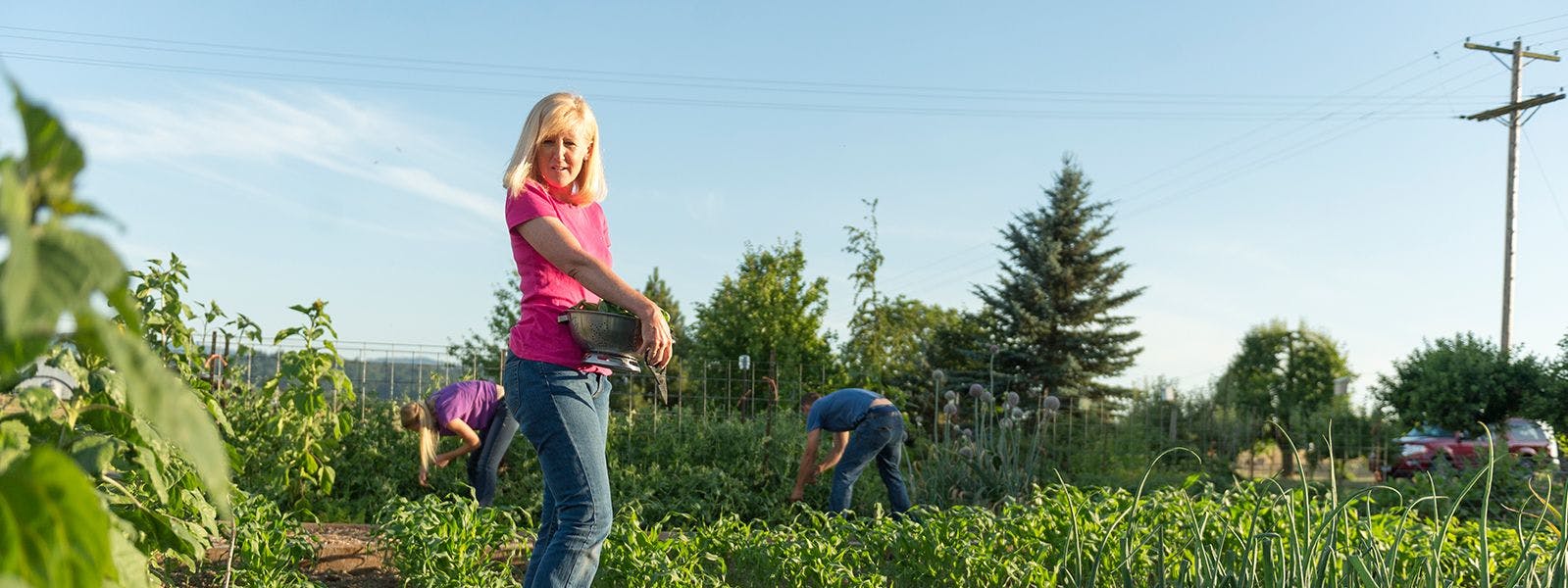
Rooted
Mai Nguyen: How Food Can Turn a “Place” into a “Home”
Mai Nguyen, climate researcher, disaster management specialist, refugee resettlement service provider, co-op developer and farmer, talks about her current focus on creating sustainable alternatives to the industrial food system and mobilizing young farmers to reform political structures in the U.S. She shares about the way her family’s history as refugees has influenced her interests in community and cooperation, growing food yourself, culturally relevant crops and the incredible project she’s launched in the California Grain Campaign.
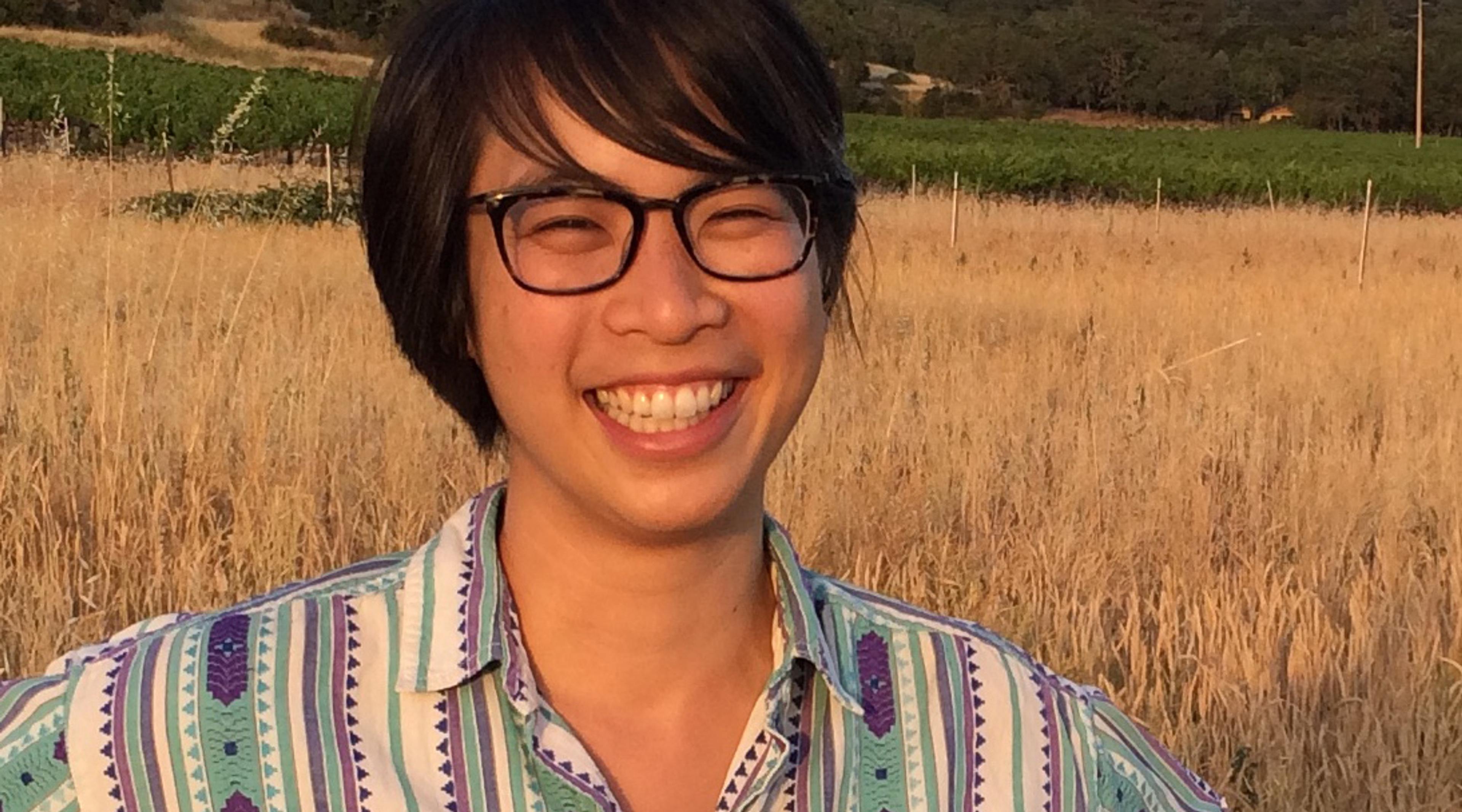
Tune in to hear about:
- How Mai learned that cooperation is essential at a young age.
- Why a connection to the land is often especially important to refugees.
- How Mai and other committed citizens changed legislation in San Diego for the better.
- What sparked Mai’s interest in farming.
- Culturally relevant crops in organic agriculture (a topic that’s been a long time coming within the good food movement!)
- The super-cool stuff going on at the California Grain Campaign.
Listen at the link below, on iTunes, Stitcher, Google Play or wherever you get your podcasts!
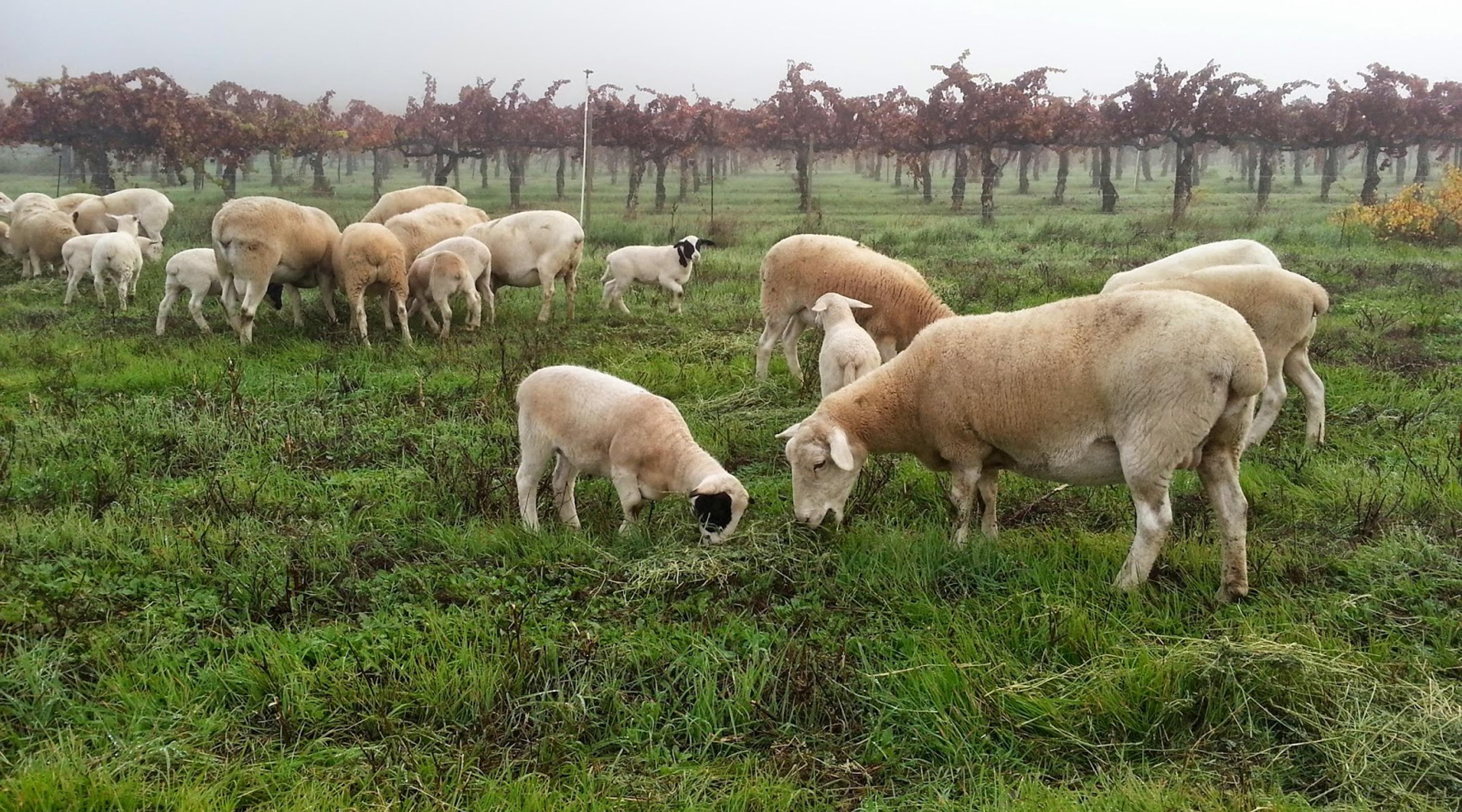
Rootstock Radio Interview with Mai Nguyen
Air Date: January 28, 2019
Welcome to Rootstock Radio. Join us as host Theresa Marquez talks to leaders from the Good Food movement about food, farming, and our global future. Rootstock Radio—propagating a healthy planet. Now, here’s host Theresa Marquez.
THERESA MARQUEZ: Hello, and welcome to Rootstock Radio. I’m Theresa Marquez, and I’m here today with Mai Nguyen. After experiences of being a climate researcher, disaster management specialist, refugee resettlement service provider, co-op developer, and farmer, Mai is currently most active in creating alternatives to the industrial dehumanized food system through their farm and collaborations. And she’s (they’re) also working with young farmers to reform the U.S.’s political structures. Wow, that’s a big agenda! Welcome, Mai.
MAI NGUYEN: Thank you so much for having me. And hopefully we can scratch at some of those topics.
TM: Yeah, well… So, Mai, wow, I can see that you are someone who truly, probably, loves farming, I’m going to guess, and also, though, has come to be a real activist. Tell us a little bit about how did you, especially as a Vietnamese-American, get into this farmer-activism passion that I think that you have?
MN: Well, I think I’ve always inhabited some marginal space in America. My family came over as refugees, and without any prior generations of Vietnamese-Americans in the U.S., we didn’t have much political representation, resources, institutions that would lend to us, or even groups that could speak our language. So, from just that early childhood start of recognizing that we really have to work together as a community in order to meet our own needs, that the scaling up of our efforts by cooperating with each other, by being a really strong-connected community, that it really lent itself to scaling up that can have a political influence.
So, as kind of seen throughout my life of, say, going into farming and using pretty alternative practices—and also being among a very small population of people of color in rural America, rural California—that in order for us to really have our needs met, but also even for our safety, that we have to work together and organize. And that foundation of organizing or just being connected as a community, it enables all of us to be responsive to whatever happens, be it in that, kind of, lowercase p politics venue of making sure that we are helping each other get access to equipment, procure land leases, or just quality seeds that are relevant to the crops that we want to grow and the food that we want to produce—that by having those relationships in times when there are policies that are threatening members of our community, or arms of the government that are affecting us, such as ICE coming in or the National Guard when our region is on fire, by being a part of the community that is attentive to each other, that we are looking out for each other, and then can take kind of that capital P Political action in defense of ourselves, and also just paving the way for the future.
TM: Well, Mai, were you born in California after your parents got here? Or were you born in Vietnam and came over as a little girl?
MN: Yeah, I was born and raised in California. My dad was resettled to San Diego, and my parents met in Southern California, where I grew up.
TM: Well, and also, were they farmers?
MN: No, neither of my parents were farmers, nor their grandparents—or my grandparents and their grandparents. But I did grow up with a very robust and vibrant garden in the backyard that my grandmother kept up. And she told me that everybody has a garden, because everybody needs to eat. And you don’t know what’s going to happen. You don’t know if the market is going to have food. You don’t know if the farmers can take their work to market. And so you always have to have a garden just in case.
TM: Well, you know, your grandmother sounds like my mother, who of course lived through the Great Depression as a young lady. And, you know, even though I was born after World War II and we were far away from the Depression, that never left her, that “I need to have a garden, and we should all have gardens, and we need to always know that there are times when there’s food [in?]security.” And I enjoyed what you just said about politics, the big P and the little p. But maybe you could say a little bit about, how was that different—the big P and the little p in politics?
MN: So, in the neighborhood that I grew up in in San Diego, we have a very large, diverse immigrant and refugee population. Over 80 languages are actively spoken amongst 80,000 people.
TM: Oh my gosh!
MN: Yeah! So that should give a sense of how diverse this place is. And when I was working in that neighborhood where I grew up, and working on refugee resettlement, there were people who I knew coming in as clients. And in hearing their stories, living in the same neighborhood, we bonded over a connection of wanting to be connected to the land. That it was, even though, a new place—that this was the first home for our people, first new place for our people in many generations—that we still wanted to have this connection to the land.
And so, while many of us don’t hold title to property, we still wanted to be able to contribute to the land, to cultivate and to grow food that would feed us, that was familiar to us, and also that we could share with other people, who might not even have the ability to go out and experience the land.
And so we started finding neighbors’ lawns that were empty and asking them if we could grow food there, finding other empty spaces, and kind of creating this politics of rethinking public space and private space as well. I had, through these relationships, it was a different politics of conceptualizing where we can be, what we have agency over, and what we can be stewards of.
And over time, we saw a need to create an even larger space for more people to be able to be connected to the land and to grow food. And so, working through the organization that I was a part of, the International Rescue Committee, we identified a two-and-a-half-acre parcel within the neighborhood that had been vacant for a long time, and attempted to turn that into a community garden. So we grouped together—these refugees, immigrants, and community members—to then try to change the process of how community gardens can be documented and legalized in San Diego.
And so, our sort of lowercase p politics of rethinking space and our relationship to land and who has access to it, this translated into transforming San Diego’s policies so that the bureaucracy for applying to have a community garden was much less cumbersome and much less expensive. And so since then, 10 years ago, we’ve seen a great growth in community gardens that is proof that there was a need there but that a political change needed to happen, a policy change needed to happen, in order to really open up those doors.
(9:30)
TM: Well, that is so exciting to hear, that you were able to do that and you really were able to change policy. I see that you have a website, www.FarmerMai.com. And that makes me feel, now, you very seriously see yourself as a farmer. How did you get from working with immigrants and in community gardens to saying, “Gee, I think I’ll do some farming”?
MN: Yeah! Having been a climate scientist and doing refugee resettlement, and also having worked in waste management, I thought about, well, in relation to the climate, what are the ways in which humans are impacting our climate, our land, and our landscapes the most? And it’s through farming. And regarding refugee resettlement, when we think about what does it mean to resettle or to create a home, food is a very important means for that transition. And you might live in a completely new place, very different language and culture, a whole new set of norms, but food is something that you intimately interact with everyday and keeps you alive. And so, that was another point of entry into farming for me.
And waste management is actually… How I actually started even getting my hands kind of in the dirt was because I was very interested in the idea of waste. It’s a very Western concept that materials just have one direction, that they’re somehow useful and then useless. But in reality, we know that we live in a finite system, a system of conservation of mass. And so we have to turn all of our materials, what we think of as waste, into something usable again. And farming does that with so much of our Earth’s resources and turns it into something that isn’t just productive, but essential and healthy for us.
And so, from those three points, I got into farming and wanted to continue those threads of addressing climate, food access, and cultural relevance, as well as being a good ecological steward, incorporating all of those into my farming practices.
In the work that I was doing in San Diego, in that neighborhood that I grew up in that’s really diverse, I had been running a farmers’ market where we were bringing in crops, and farmers who were growing crops that were culturally relevant to that very diverse community. And while I saw that there was a high demand and desire for these culturally relevant crops, when it came down to the Southeast Asian crops, and my Vietnamese community just sort of buying out two truckloads of Southeast Asian crops every weekend within the first hour and half or two hours of the market being open, I was excited that people were able to get locally grown Southeast Asian crops and that the farmers were really doing well, but I just couldn’t stomach that those crops were sprayed with herbicides and pesticides—and that those chemicals, such as Agent Orange, were sprayed on us as people in Vietnam. And to think about refugee resettlement and making a life here, I wanted people to be able to taste home without this sheen of all of the chemicals and things that were going to lead to our slow death elsewhere, after all that had been done to try to escape the conditions in Vietnam.
And so, when I got into farming, I wanted to grow Southeast Asian crops organically and enable people in my community to have this food that has nourished us for thousands of years, to be able to have that and continue to have it be healthy for us without any form of compromise.
TM: Oh, that’s so great, Mai! Thank you for sharing that with me—it just fills my heart. I have a favorite store in Portland I go to all the time, and I love it so much. And I see this piles and piles of beautiful bok choy and other grains that are so very Asian that we associate with stir-fries and so on, and know that they’re not organic, and it does break my heart too.
MN: Yeah, and it’s also not what we had done before, but we’ve been pushed to because of our conditions here, where we have to produce more in order to meet the rent and be competitive and survive. But it’s a short-term tactic at the expense of us in the long term.
(15:03)
TM: If you’re just joining us, you’re listening to Rootstock Radio, and I’m honored today to be speaking with Mai Nguyen, farmer and activist. And today we’re talking about a lot of the impacts that immigrants have had from our policies on immigration, but also about their role in farming.
You know, Mai, so you decided to be a farmer, and you’re actually dryland-farming wheat, is that right?
MN: It’s true, yes. I’m dry-farming wheat in California.
TM: I guess, could you maybe tell our listeners, what is dryland farming?
MN: Dryland farming is that I rely only on rainfall for irrigating my crops. So other options are using wells, municipal taps for irrigation. Instead, in the dry farm system, none of those options are used. Rather, it’s truly rainfall that provides water for plants.
TM: Tell us a little bit about how you manage to produce four or five different kinds of wheats right now in what is considered, like what is it going to be, a 50-year drought? Tell us a little bit how that works.
MN: Yeah, in light of the drought, in light of climate change, when I started growing wheat, I wanted to find varieties that have survived different conditions over thousands of years. So, going for these older varieties meant picking out ones from regions that are similar to California. And so, looking to the Middle East, looking to Australia, zones that have undergone transitions to very arid conditions.
And so, there’s the part that’s about the procurement of seed and the importance of exchange of seed, along with the knowledge of how to grow them. But then there’s also the specific conditions and practices that enable those seeds to thrive. And so I knew that I wanted to get seeds that have, again, adapted to dry conditions and that I could continue to help them acclimate to California and our increasingly variable but drier conditions. And so, by dry farming, selecting seeds that came from drought-prone places and continuing to push their resilience has been a part of my practice.
It’s a constant tension in farming when you’re trying to farm with nature, which is that you can’t take the shortcuts that industrial agriculture has created, such as synthetic fertilizers, herbicides, and pesticides that speed up time. Like, instead of having weed seeds germinate and mowing them to decrease the weed seed load, one would use an herbicide in an accelerated system. But, thinking about the long term, that we need that organic matter in the soil, that we need to still have a diversity of biotic matter out in our fields, that it doesn’t make sense for me to accelerate the process of clearing the fields and incorporating imported nutrients, when in the long run what we really need is to take that time to build up the soil and its resilience to hold more water and to hold more life.
TM: I was super interested in the—they look like, are they heirloom varieties? Blanc de Mars, Wolkering, and especially this wheat that you say is your favorite, Sonora. I’m assuming maybe it came out of the Sonora desert? You’re growing these wheats, they seem very unusual. Are you able to sell all the wheat that you grow? And are you able to actually preserve any of its identity as it goes through the marketplace?
MN: Yes. So I think this goes back to farming for community and for ecology, rather than for just a commodity out for an open, anonymous market. And it’s been important for me to build a community around my farm and a customer base that’s based on a two-way conversation. The people that I have sold my wheat to—first starting out in a farmers’ market and then making relationships with bakers—they know what I’m planting, they know my trials and tribulations, they know some of my personal details when I’m stressed out and writing my newsletter and maybe sharing too much. But through that process of building a relationship with these customers, who then also share photos of the breads or cookies that they’ve made from my grains, showing up at my events… So by building relationships with people and a community around the farm and farmers and my practice, I’ve been able to sell my grains that are very unique, that do have a higher price point than conventional grains. But people know what they’re eating. They know what went into growing it and also why it’s important to support a young farmer such as myself.
So this process of building these relationships has taken a lot of time, but it’s made farming much more… It’s just so much more enjoyable to know someone is having a feast with my grains and sharing it with their family; that my work isn’t just going out into the open, but that people are appreciating what I do.
And so, trying to transform people’s relationship to farmers, but also to wheat, a food that has been overlooked for a long time and really stripped of its identity and flavor and nutrients—trying to build that up, I ended up creating this California Grain Campaign, working with bakers, millers, and farmers in California to really tell the story of why are these wheats so interesting in terms of flavor and what you can do baking-wise, but also in terms of the nutrition that it’s providing, and also what it’s doing on the farm. So the health of a farm ecosystem by having these grains that are capturing more carbon, providing more material that can help with swale building in a time of drought and intense storms.
By creating this collective platform at the California Grain Campaign, more of us farmers are able to talk about why heritage grains, why California small-scale farming is important. And so, by putting together all of our collective stories, we’re able to reach even more people. And it benefits all of our businesses, but of course our whole society by making these grains available.
(23:19)
TM: Well, I can see that you’re a natural marketer here. The California Grain Campaign—is it going on now?
MN: Yeah, it’s going on now. And we have this mission of supporting California’s small-scale grain farmers while also making local whole grains available to the public. And whole grains are very difficult to get ahold of because our industrial processing system is oriented toward stripping away the bran and the germ to create a sifted flour that is shelf stable. And that’s what you see as all-purpose flour, pastry flour, white flour.
And then, so going back to your other question about keeping the identity: the hardest part about preserving identity is in the immediate post-harvest stage of trying to clean the grain, which is to remove the chaff and the other weed seeds from the wheat or barley itself. And because I’m growing out these rare varieties, when I go to a grain-cleaning facility, they laugh at a 2,000-pound pallet of grain, when their typical minimum order is 20,000 tons.
TM: You have one ton.
MN: Yeah, I have one ton! And so, trying to find a grain cleaner who can take my grain and not lose it in their giant machines is very difficult. And so, trying to address that with other small-scale famers, we’ve sought out equipment and people’s barns from the Midwest that are scale-appropriate for us. And we’re banding together to try to form a cooperative to own this equipment together and preserve the identity in that cleaning process.
And I’ll just wrap up by saying that at least, while we do have our two millers in California who are scaled to the level where they can take one ton of one variety and also care about retaining the identity of those grains, and letting their customers know what’s so fascinating about these grains. And in the case of Grist & Toll, which is a mill in Pasadena, they do a lot of research and development, testing each season’s batch of identity-preserved grain as bread, as pastries, or cookies, and letting people know exactly how they can translate these seemingly foreign grains into something that they’re familiar with.
TM: So you are selling at farmers’ markets. Are you selling to food service? And, you know, a person like me or someone who’s in the Bay Area, really eager to use some exciting and interesting different wheat grains, how would they find you? Or how would they find these products that you and other farmers are growing?
MN: So for me, personally, if someone wanted to find my grains, at this point I sell the majority to Grist & Toll because of what I had explained earlier about them keeping the identity preserved, but also because they are stone millers, and it’s important how the grain is turned into flour. The other part is that because I farm with such attention to the environment and also to labor practices, that I’m also very particular about who ends up with my grain before it gets to a customer. And so, trusting Grist & Toll’s labor practices as well as their attunement to the environment, I have been selling to them. And so that’s how most people can get my flour.
I also do set some aside as whole wheat berries for those who want to eat the grains as dinner grains. And so people can just contact me through my website. And for other California farmers, people can go to the California Grain Campaign website where we have a catalog that lists all of the farmers who are part of the campaign, information about their farms, their practices, and then also information about each of the varieties of grains that they grow—their history, flavor profile, how to use them. And all of that is available through the website, CaliforniaGrains.com.
TM: CaliforniaGrains.com, and that’s the California Grain Campaign. Exciting, and especially for those of us who love to bake bread and really know that the flavor’s so impacted by the kind of flour.
Thank you so much, Mai, for just all the great work that you’re doing, and it’s been a real pleasure to be speaking with you today.
MN: Yeah, thank you so much for letting me share a bit of my story, and I hope that it’ll spark more conversations.
You can listen to Rootstock Radio on the go wherever you get your podcasts, and find us online at RootstockRadio.com. Rootstock Radio is brought to you by Organic Valley.
© CROPP Cooperative 2019
Related Articles
- Tags:
- climate,
- social justice,
- working together,
- Rootstock Radio,
- women in food & agriculture,
- activism













